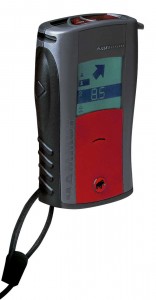
Barryvox Pulse
Price: $490
Range ~ 48m (best),
~ 40m (worst)
Multiple Victims Features, Vital Signs, Customizable.
Overview
The Pulse doesn’t just up the ante from two to three antennas, but four. However, truth be told the value of this fourth antenna is as obvious as an appendix. To even mention the availability of this perhaps detracts from the value of the Pulse. The fourth antenna does nothing to help you find a victim, it only exists to transmit motion information in the extremely rare event that you are searching for multiple victims in an avalanche, locate more than three quickly, and need to decide who to dig for last (‘cuz one isn’t breathing and the others are).
Yeah, TMI! In that situation it may matter, but are you really going to be thinking that rationally then? I’m afraid it will just confuse an already soul-racking experience. If you must know about this feature, read the manual (or see pg 2).
Now that we have the pulse feature of the Pulse discarded from the conversation we can focus on what the Barryvox Pulse does well – find buried beacons with alacrity – fast and easy. Pieps DSP might yield greater range for first obtaining a signal, but not by much. If you dig into the available menu system, you can do all kinds of customizations to adjust what sort of clues the Pulse gives you, allowing you to alternate between digital and analog modes, make the analog tone switchable in close, toggle the direction on or off, and chose what pulse signal you are using, depending on if you’re stateside or in the eurozone. Again, if you want to know more, read the manual. For most the factory settings are just fine.
Power Up!
After you’ve loaded three triple-A batteries in the back, you switch the Pulse “on” by depressing the red button at the top down, and sliding it to the right (with the screen facing you). It now goes through a series of internal checks and asks you a few questions. If you don’t respond fast enough, it assumes you weren’t interested and continues with the self check. If you press the diamond etched button (finger side for righties) during this start up phase it will ‘activate’ the ability to delve into the backend menus for a little customization. In about 15 seconds it is transmitting unless you’re ready and agree to calibrate it, or do a group check, or want to customize it.
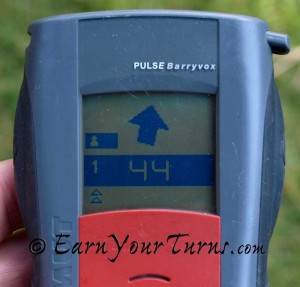
A fairly intuitive visual screen. Walk in the direction of the arrow, make sure the numbers go down. Number of signals indicated on the Left. Easy stuff.
Searching
To switch to receive, depress and push the slider on top to the right one more notch.
From the factory the Pulse is set to Basic mode. When you switch to search mode the Pulse begins listening with two antennas. As soon as it detects something it lets you know with a loud double-beep, and the display begins showing distance and direction. The distance isn’t too accurate when far away, but keep in mind this is where the signal is weakest and none of the other beacons are numerically that accurate either.
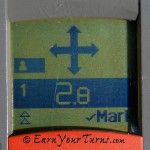
When closer than 3 cubits, the arrow is replaced by a 4-way arrow and an asynchronous beep that gets louder and ...
Once the Pulse locks on to a signal you’re pretty much on easy street – just go the way the arrow points and make sure the distance numbers are dropping. As you get closer the steady volume single cadence digital beep will double the speed inside of 10 meters until you are within 3 meters. At this point both the audio and visual clues shift gears; the directional arrow disappears to be replaced by four arrows forming a cross and the audio changes to a digital beep that becomes louder and more rapid as you get closer. Simultaneously the cross shrinks the closer you get. It’s a good combination of signals to see and hear your proximity.
Start probing at the closest point in a spiral around the zone and prepare to dig furiously (with a strategy).
The default settings are well thought out as are some of the less appreciated features such as the harness and tether. The harness holds the beacon securely without restricting your movement, with a fairly easy to understand strap system. My only beef with it is wrapping up those straps for storage. Which is part of why I’ve join my brethren in the Alps and I just stash the beacon in a cargo pocket, with the tether latched to a belt loop. Frankly, chest harnesses get in the way, and it’s much easier to reach down and pull it out of a thigh pocket. Multiple Victims
Should you be in the unlucky position to be dealing with more than one victim, the Pulse does a good job of recognizing the number of victims within 30 meters, and reliably marks each one as found by pressing either of the side buttons. The number of victims detected will appear on the left side of the display. In my experience additional victims may first be detected as much as 25 meters away. The first indication of additional signals is usually indicated by a + after the number of known victims.
When you’re within 20 meters of an additional signal the Pulse is darn good at knowing how many there are. It also does a good job of recognizing and separating older analog beacons like the F1, but that is somewhat dependent on how many there are.
F1s have a wider pulse, which can allow for more overlap with multiple signals. Since timing is an important factor used to distinguish multiple beacons, the more they overlap, the harder they are to clearly separate and keep track of. One F1 among two or three newer beacons Pulse does without batting an eye. Two or more F1s may create some uncertainty, depending on proximity and timing. Usually within a minute or two overlapping signals separate, but that could be an unnerving minute in a real situation.As mentioned above, there are several customizations you can make, but the factory settings are clear, easy to understand, and impressively optimized. Unless you’re a snow geek, there’s no need and if you are, the Pulse gives you plenty to nerd out about (see pg 2 & 3).
Is there anything to not like about the Pulse? Certainly the price. But if you’re content to not nerd out, get Barryvox’s Element. It’s the Pulse without the vestigial fourth antenna and motion sensors with the default search settings for about 20% less. If you want to play with menus and other such avy beacon minutia, or you’re the ‘leader’, pony up and get the Pulse.© 2011
Customizing the Pulse
Level 2 Menu choices
Barryvox
www.mammutusa.com
Pulse
Price: $490
Pwr3 AAA batteries
Range: Best coupled ~ 48m, Worst coupled ~ 40m
Multiple Victim Features, Customizable, Vital Signs

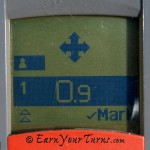
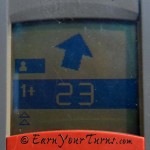
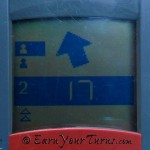
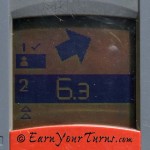
1 ping
[…] need it, the Neo should be one of your top beacons under consideration along with the Barryvox Element, Pieps Tour, and BCA’s Tracker2. For speed and simplicity, Arva’s Neo is hard to […]